Acacia terminalis
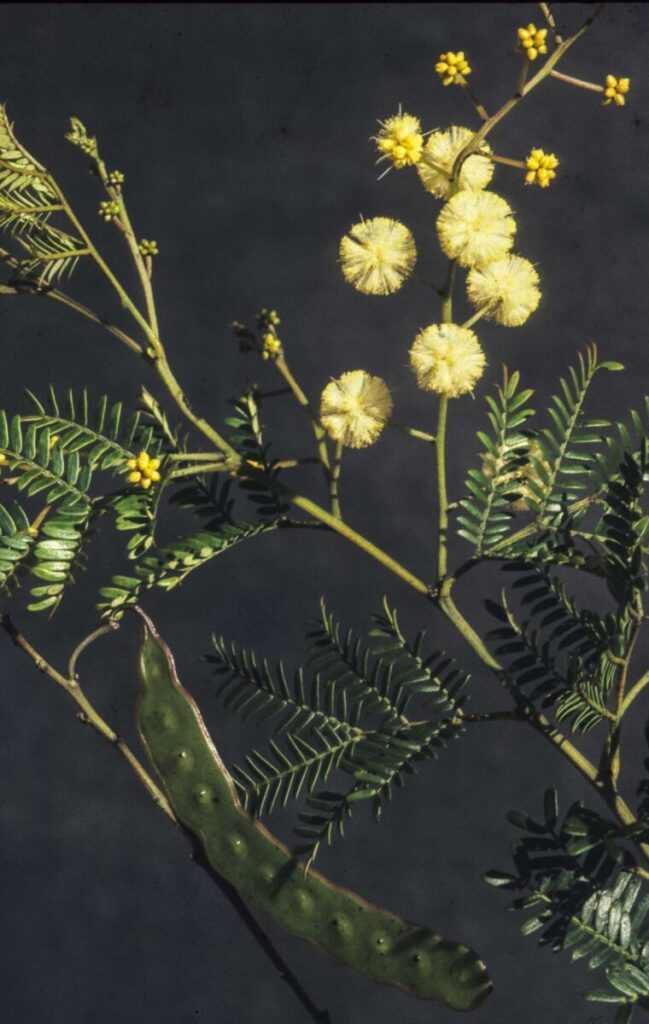
Acacia terminalis is a variable plant in habit, ranging from a small shrub about 1 metre in height to a large shrub up to about 5 metres tall. Widespread in open forest and woodland from northern New South Wales to Tasmania, mainly on the coast and tablelands, usually on sandy soils or sandstone.
Acacia suaveolens
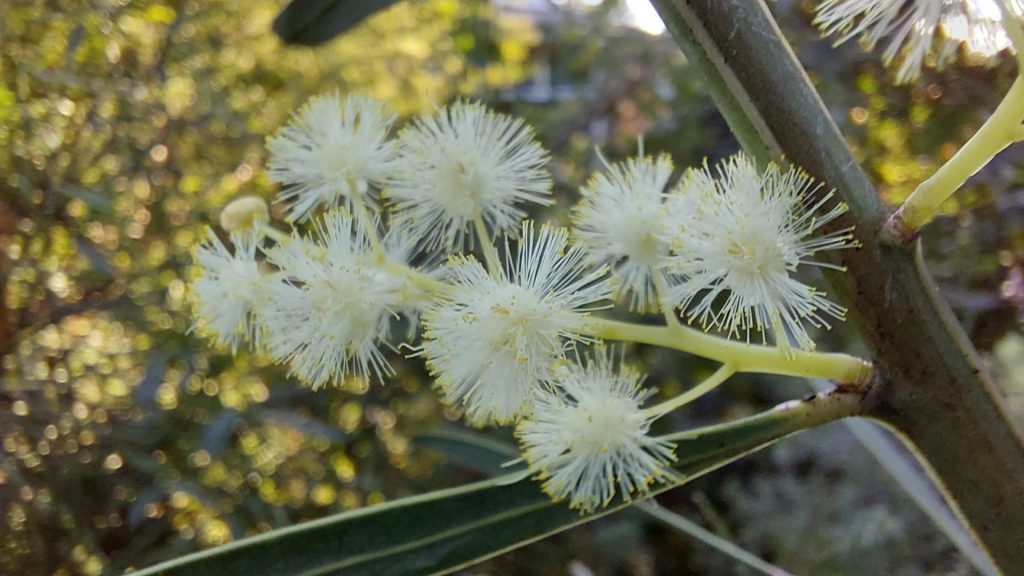
Acacia suaveolens is a sparse and leggy shrub growing from 0.3 to 2.5 m high, with a narrow spread; occurring from southern Queensland, down the east coast of NSW and Victoria, into Tasmania and South Australia.
Acacia verniciflua

Acacia verniciflua is a variable shrub growing to 4 m high; generally erect and sparsely branched. Grows in dry sclerophyll forest in South Australia, Victoria, New South Wales and Queensland. In NSW, it is mainly found on the tablelands and western slopes.
Acacia ulicifolia
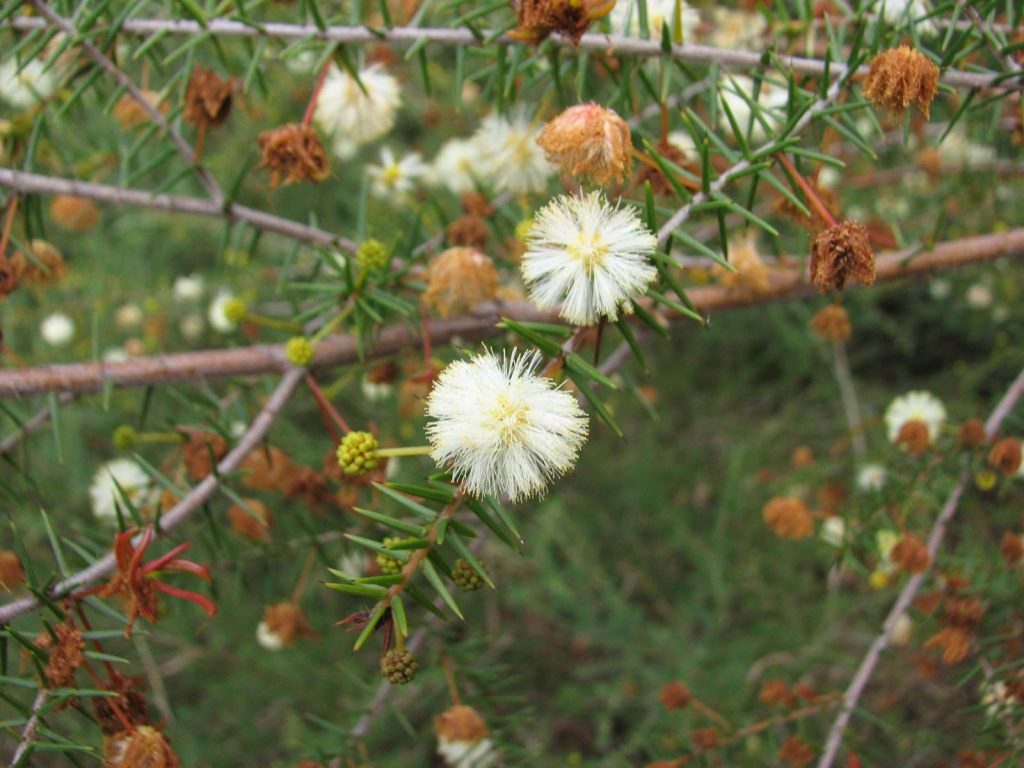
Acacia ulicifolia is a prickly shrub growing to around 2 metres high by 1 to 2 metres wide, in dry sclerophyll forests and woodlands in NSW, Victoria, Queensland and Tasmania, usually in sandy soil. It extends up and down the entire coast of NSW and west to the western slopes.
Acacia paradoxa
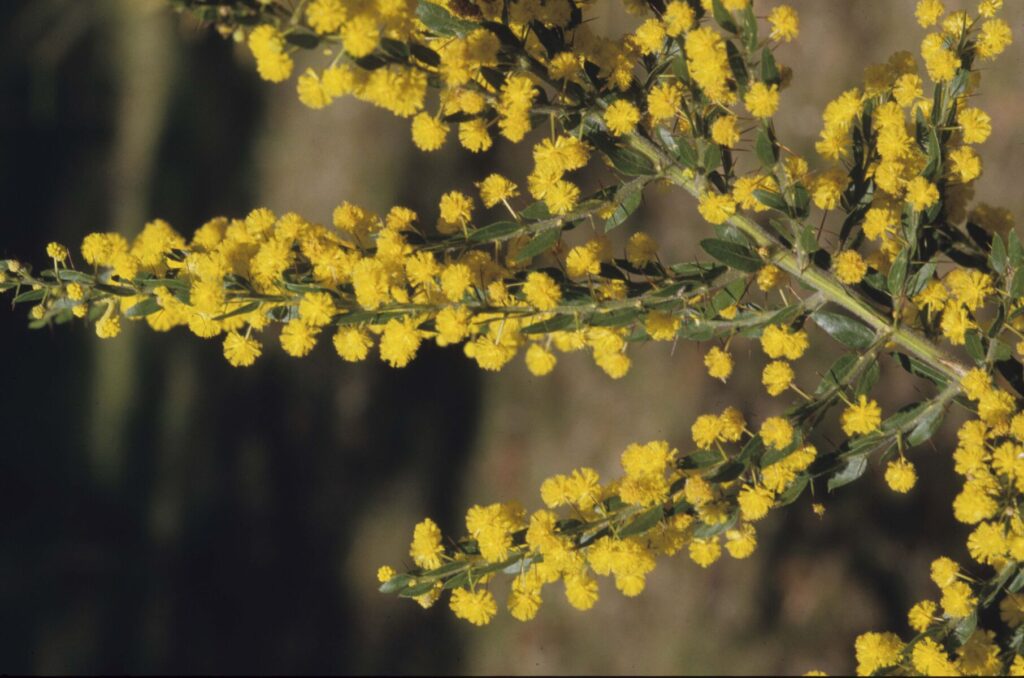
Acacia paradoxa is a prickly shrub growing to 4 m high by up to 4 m across. It grows in many different communities in various soil types in WA, Qld, NSW, Vic and SA. It has been introduced into Tasmania for cultivation and has naturalized.
Acacia oxycedrus
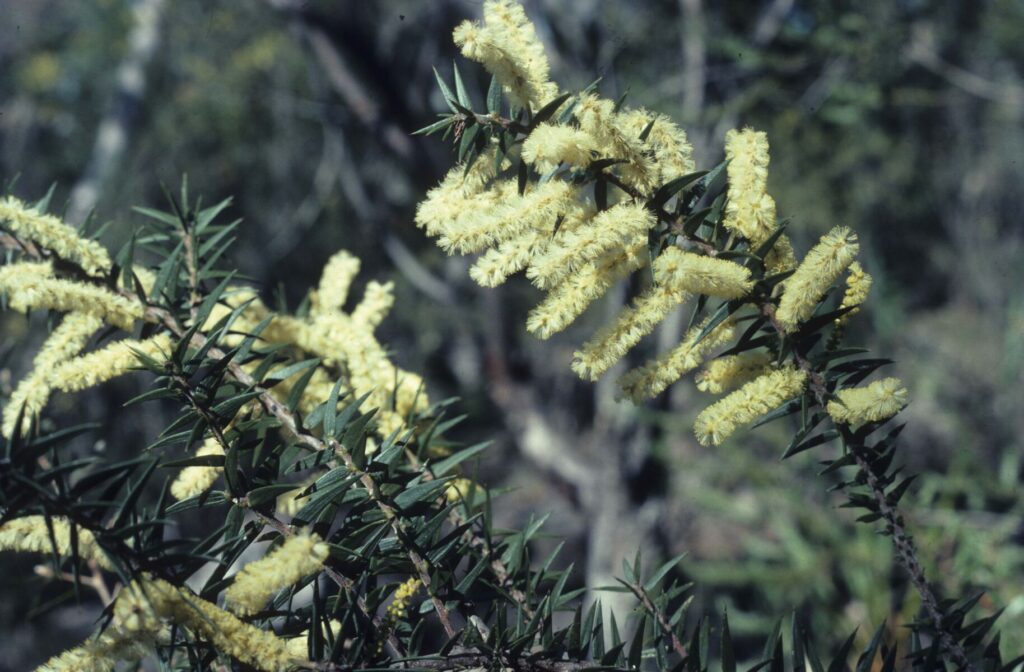
Acacia oxycedrus is a prickly but interesting wattle, growing to 3 m high by 2 m wide. It is typically found on sandy soils in dry sclerophyll forest or heath in South Australia, Victoria and New South Wales. In NSW, it is mainly confined to the Greater Sydney Basin but with disjunct populations on the far south coast.
Acacia echinula
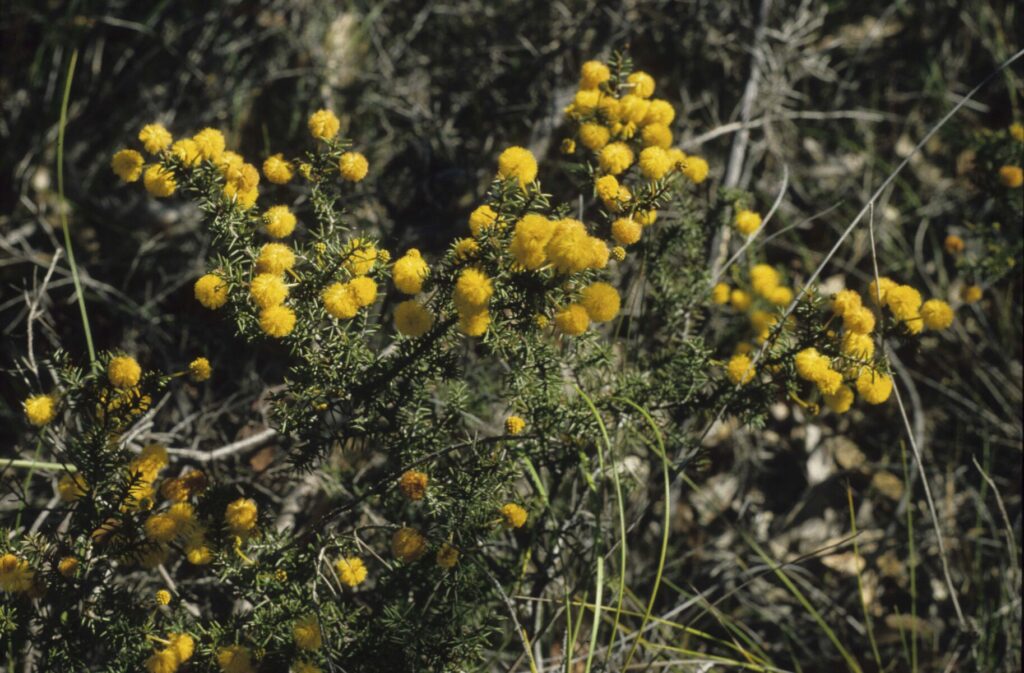
Acacia echinula is an eastern NSW shrub up to 2 m with prickly phyllodes and bright yellow flowers. It is typically found on hills and plains in sandy soils. Its prickly nature offers good protection for small birds in the garden.
Acacia dorothea

Acacia dorothea has bright to deep yellow very small flowers produced in globular heads, although the heads can be globular to short cylindrical spikes. Flowering is August to October. Restricted range and not known in cultivation.
Acacia decora
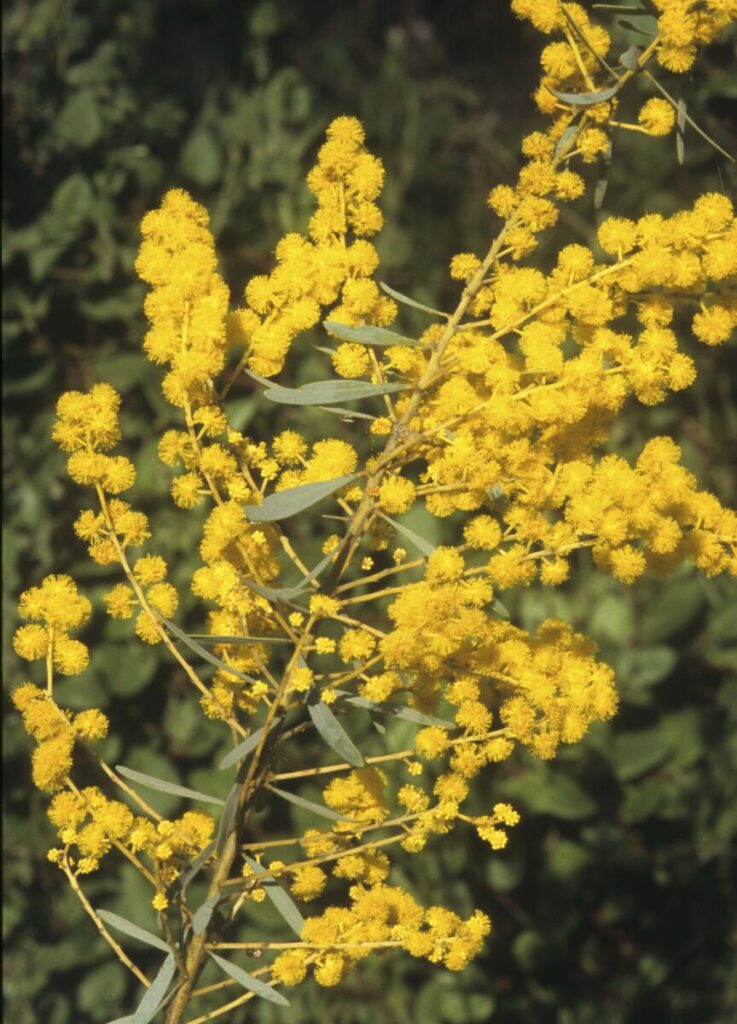
Acacia decora is one of the showiest wattles, producing globular flower-heads which can each have about 30 tiny flowers from April to October. It is often under 2 m, but can get to 5 m. It tolerates a wide range of conditions.
Eriostemon australasius
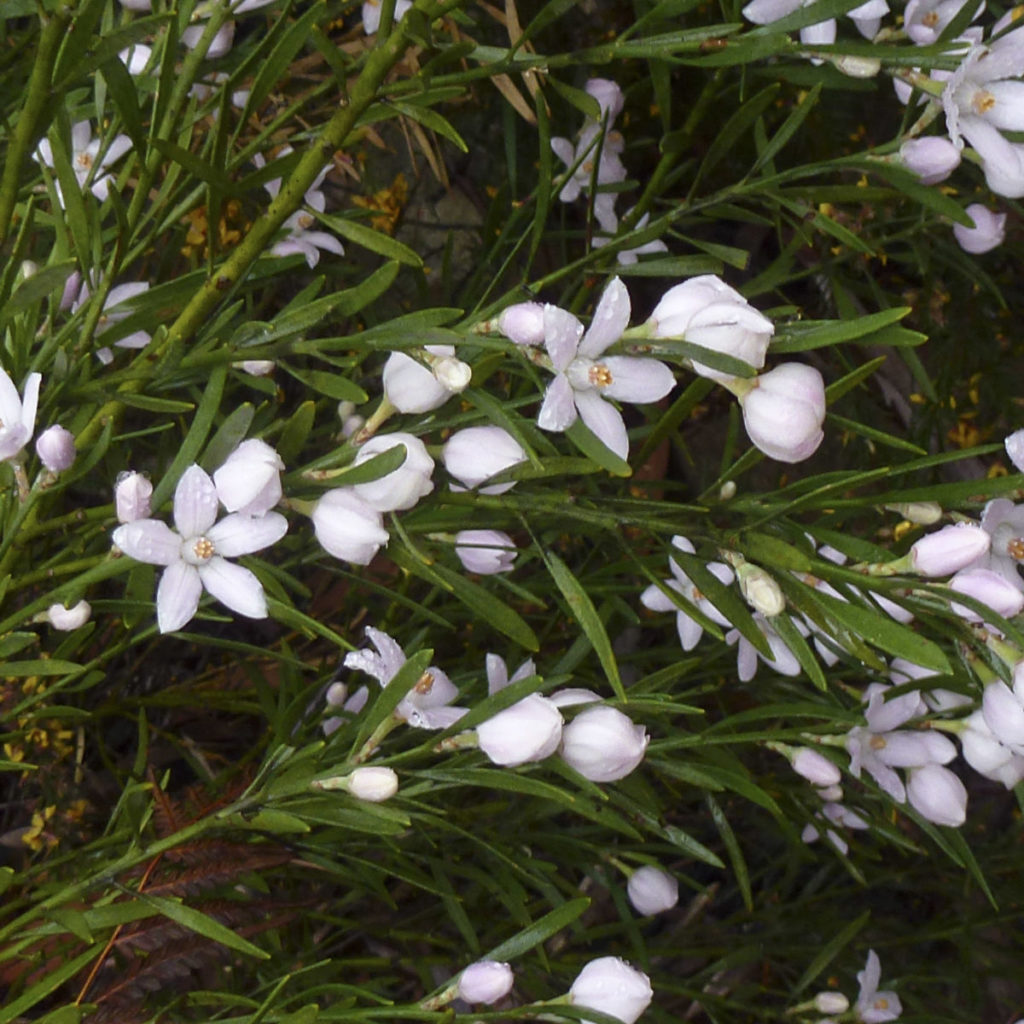
Eriostemon australasius grows in heathland and dry eucalyptus woodlands from Lake Conjola on the New South Wales south coast, northwards, mainly along the coast, to Fraser Island in Queensland. It is a very desirable plant for the garden but results in cultivation are mixed.
Pimelea linifolia
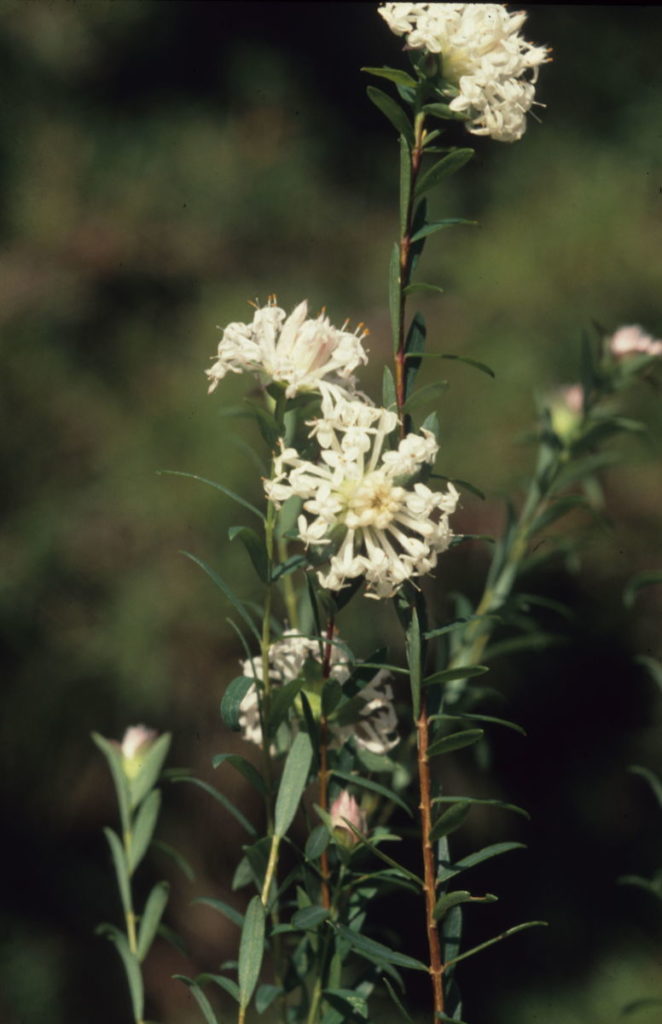
Pimelea linifolia prefers a well-drained soil and prune after flowering to keep compact and enhance flowering. It tolerates dappled or full sun. It can be grown in a mass display on a raised bed or rockery with other plants to good effect.
Callistemon citrinus
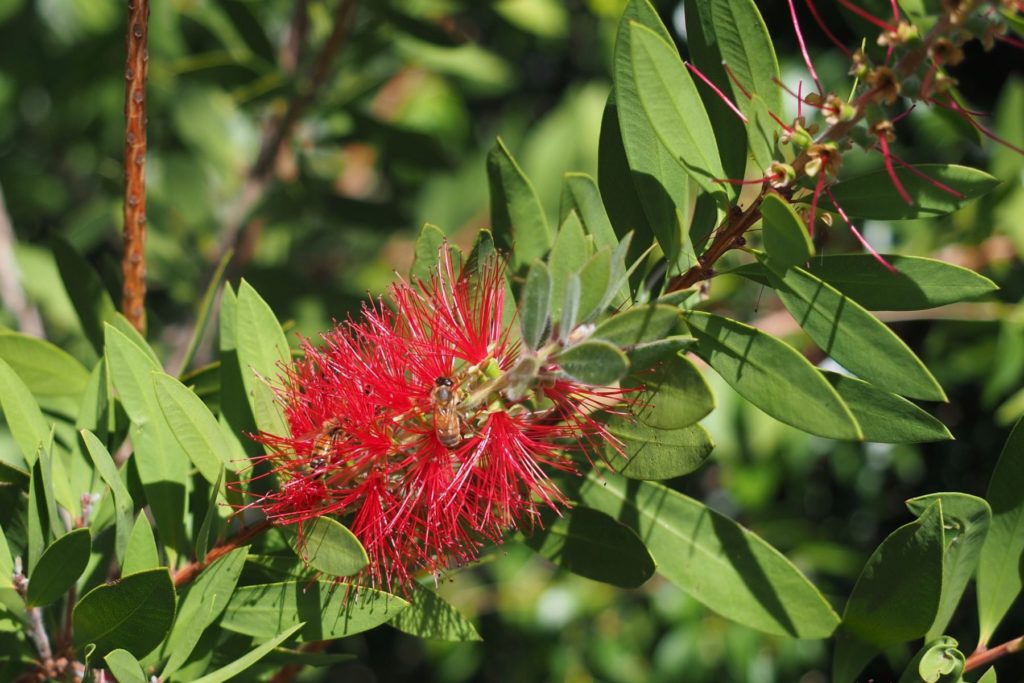
Callistemon citrinus syn: Melaleuca citrina produces flowers in late spring, summer and autumn with two flowerings if some moisture is provided. There are many hybrids produced using this plant as a parent. A popular cultivar is Callistemon ‘Endeavour’ which can have bright metallic red/pink inflorescences.
Epacris longiflora
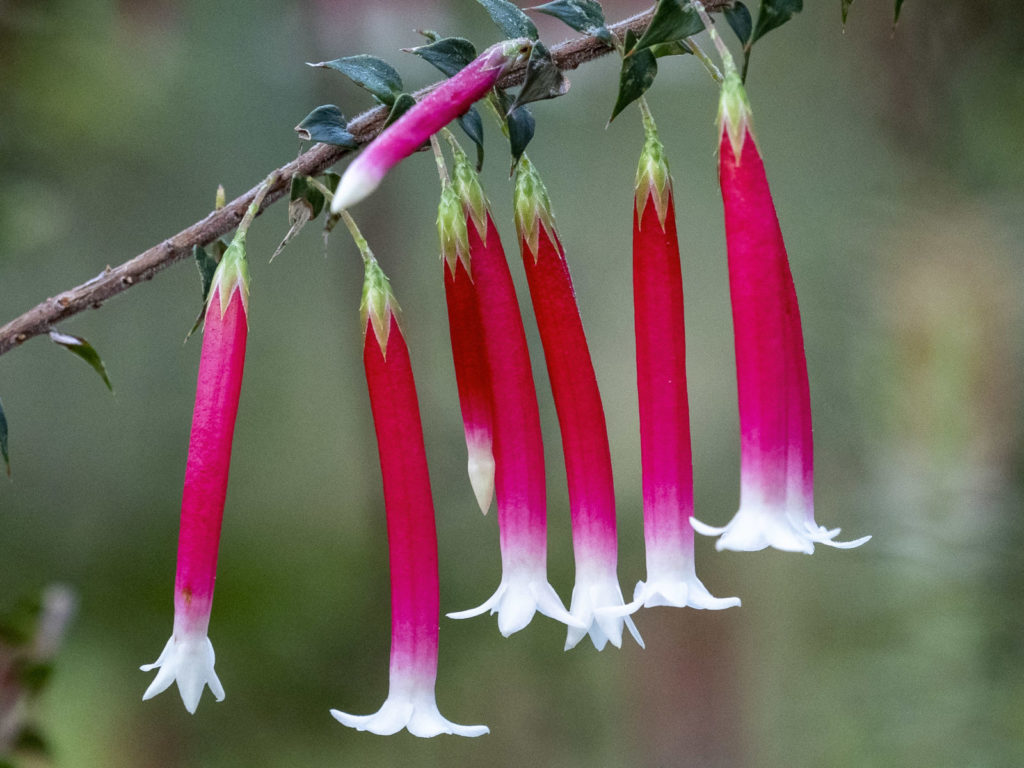
Epacris longiflora is an erect to spreading shrub, to 2 m high; stems with prominent short broad leaf scars; leaves ovate to about 2 cm long, and 7 mm wide, with a sharp narrowing point; mid to dark green in colour. Flowers extending down branches, produced within the leaves.
Boronia ledifolia
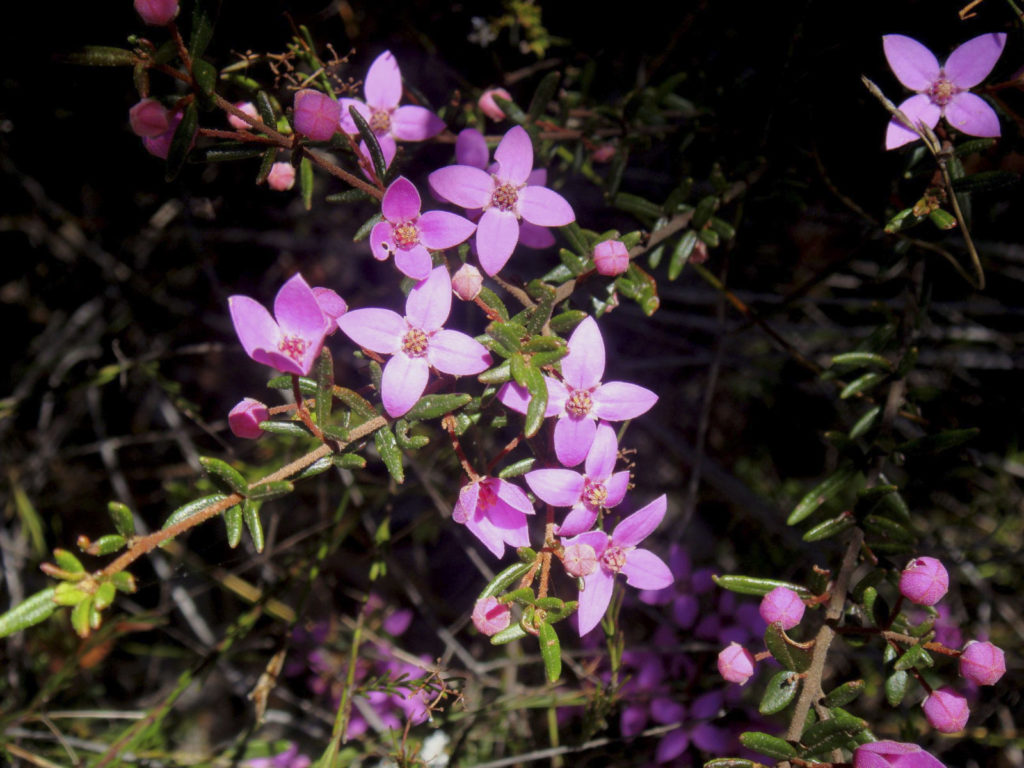
Boronia ledifolia grows naturally in moist, semi shaded positions with free draining lighter soils. Very showy in sandstone woodlands when in flower. In some seasons, it can be noticed on the sandstone cliffs above the Pacific Highway between Sydney and Gosford. A desirable garden plant in flower from late winter, although Boronia generally are notoriously difficult to grow.
Prostanthera densa
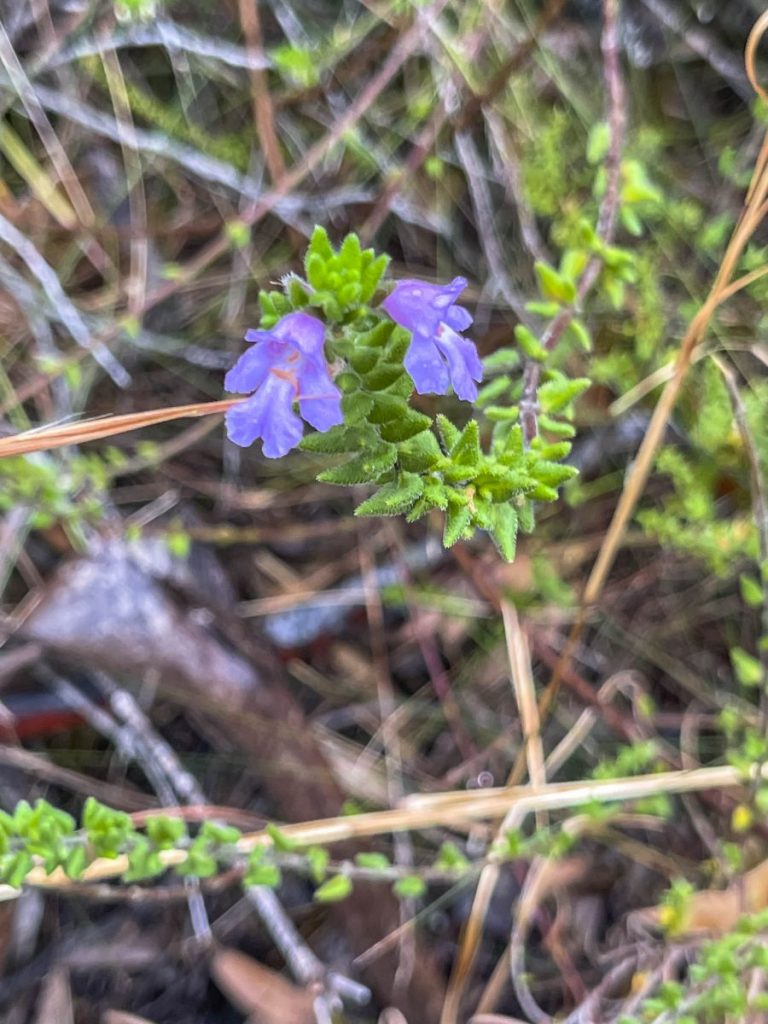
Prostanthera densa is a small shrub. Its natural distribution is in five known areas in NSW, all very close to the coast – Nelson Bay, South Cronulla, Royal National Park (Marley), Helensburgh and Shoalhaven (northern peninsula of Jervis Bay). It is found growing on a range of soil types.
Boronia mollis
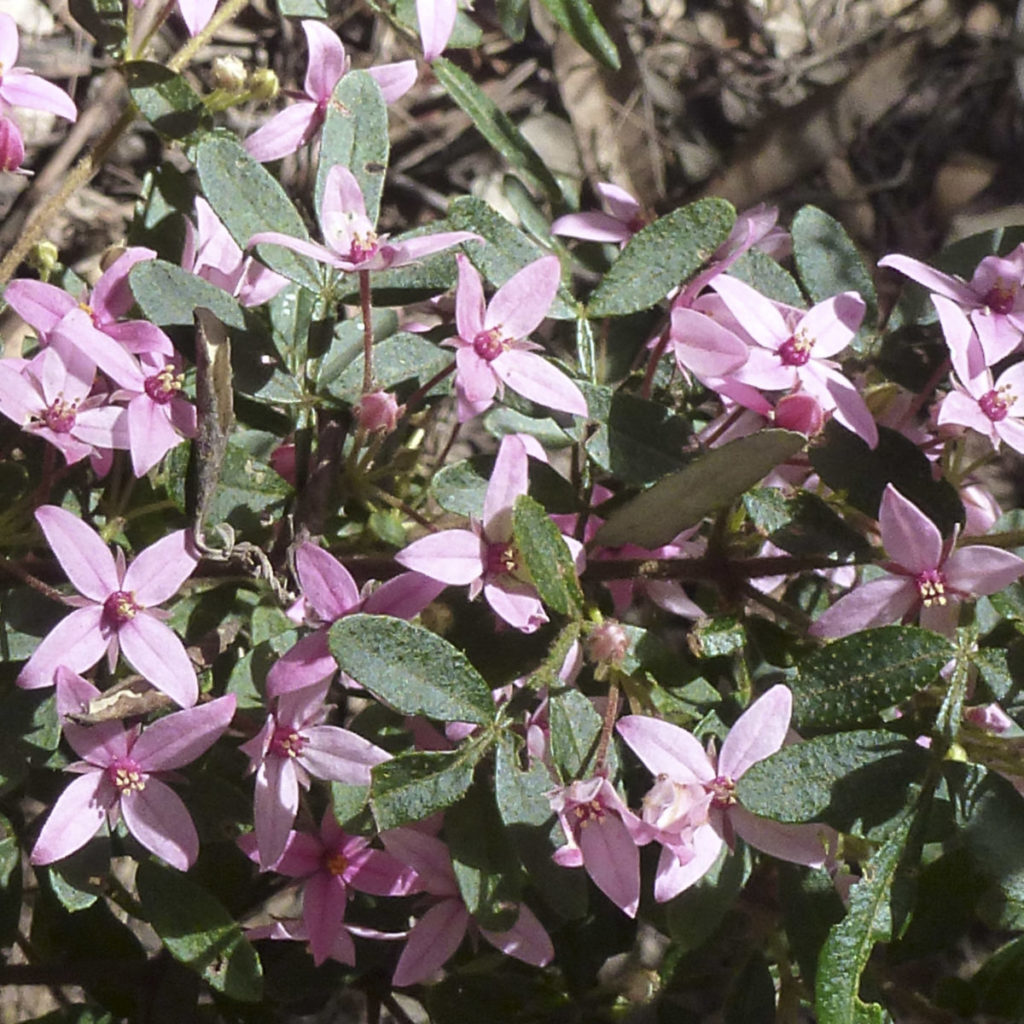
Boronia mollis is a small showy shrub to about 2.5 metres with bright pink flowers. It grows in NSW, occurring naturally around Sydney, ranging as far north as Coffs Harbour, south to around Moss Vale, and inland as far as the Dividing Range, in open forest and woodlands on sandstone.
Leionema lamprophyllum
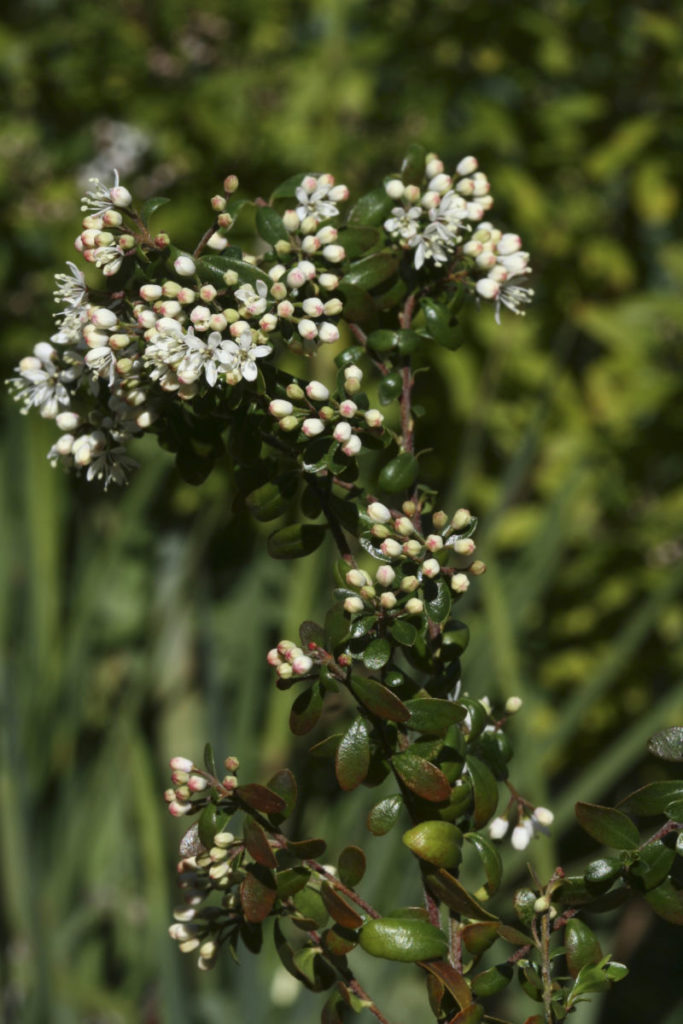
Leionema lamprophyllum syn. Phebalium lamprophyllum is a large shrub that grows on heathland on exposed ridges at higher altitudes in New South Wales, ACT and Victoria. It prefers well drained, slightly acid soils with some protection from full sun, but not heavy shade. Grows without additional watering except in dry conditions.
Pultenaea daphnoides
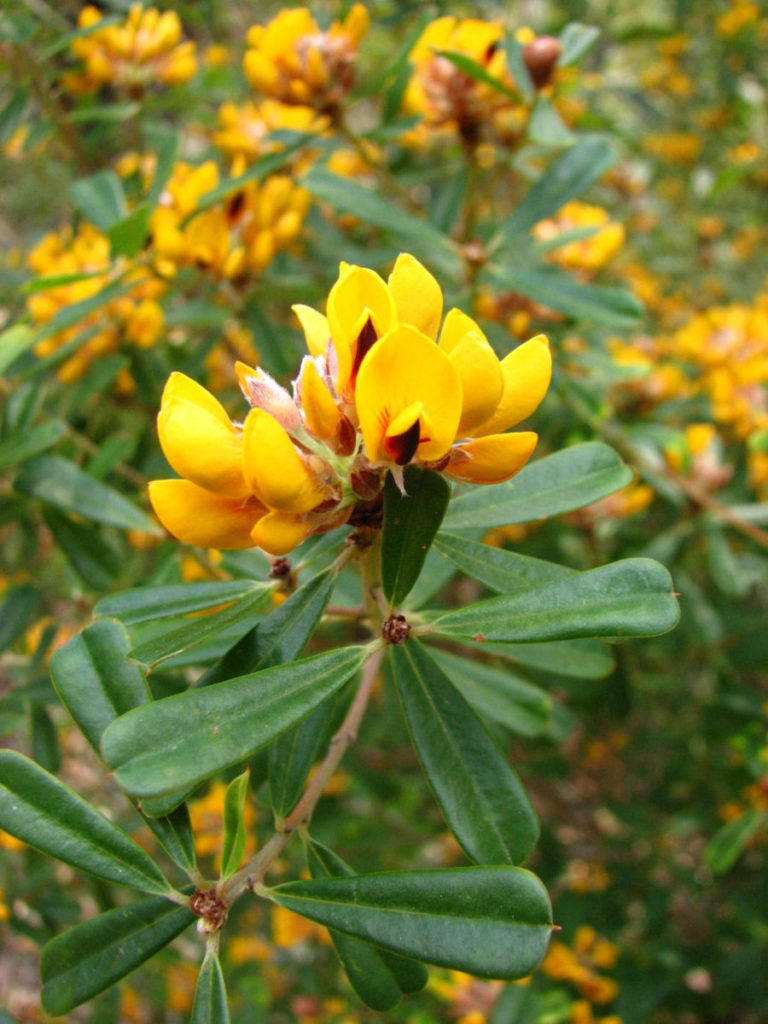
Pultenaea daphnoides is an upright shrub, growing to about 2 m tall and 1 m wide. Leaves with a distinctive cuneate to obovate shape (widest at apex), to 4 cm long and about 1 cm wide, mid to dark green. The leaves have a small sharp point (mucro).
Flowers are typically pea-shaped (papilionate) and a striking deep yellow with red markings. Flowers produced in terminal umbel-like heads, about 3 x 3 cm.
Westringia fruticosa
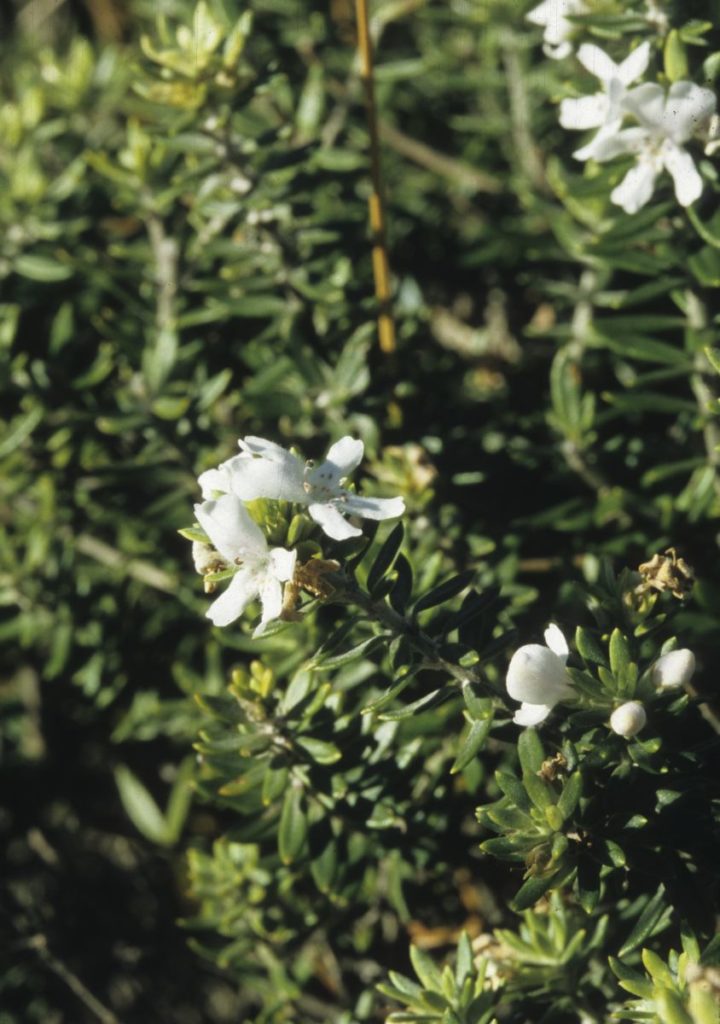
Westringia fruticosa has neatly whorled leaves to 2 cm long. lt reaches at least 3 m high and can reach 3 m across, often forming a regular dome. The flowers are white, hairy and have the upper petal divided into two lobes (a shape known as labiate) and appear all year.
Veronica perfoliata

Veronica perfoliata is a dwarf to small shrub that reaches a height of one metre in our garden. Many stems arise from a woody rootstock. Leaves are ovate, opposite, clasped tightly to the stem and with a leathery texture. The leaves are similar in appearance to the juvenile foliage of some eucalypts. In fact, when not flowering, visitors often ask: “what sort of miniature gum tree is that?”
Prostanthera saxicola
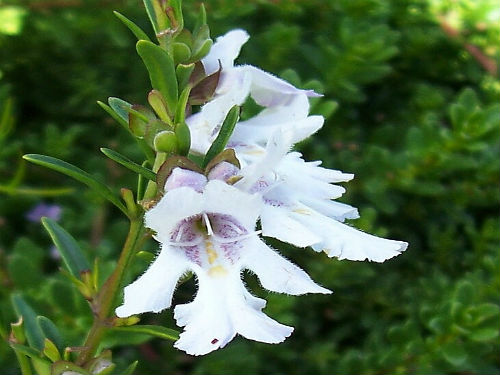
Prostanthera saxicolais a prostrate to erect shrub that may reach a height of 2 metres. Small leaves are crowded to scattered, up to 15 millimetres long, aromatic and covered with white hairs. The flowers are axillary, white to mauve and appear from July to February. Tip pruning, after flowers fade, is appreciated.
Melichrus urceolatus

Melichrus urceolatus This erect to spreading shrub (‘epacrid’) reaches a maximum height of 1.5 metres with a spread of 1 metre.
It is a very common shrub throughout the tablelands and western slopes of NSW. It gets into some coastal areas, especially south of the Southern Highlands and the north coast but is not often seen close to the coast. It extends into the north-east and northern-central parts of Victoria, west to about Stawell. It extends into Queensland, through the coast and inland to north of Cairns.
Grevillea crithmifolia
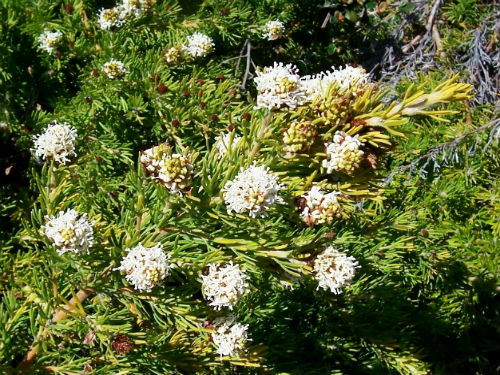
Grevillea crithmifolia has two forms. One is a compact two metre tall shrub. The other is a dense ground cover with a spread of at least two metres. The groundcover form is the one most favoured by gardeners. Light green leaves are divided at the end into three narrow segments. In spring plants are covered with dense clusters of white or pink flowers. Honeyeaters are attracted to the flowers.
Grevillea ‘Austraflora Canterbury Gold’
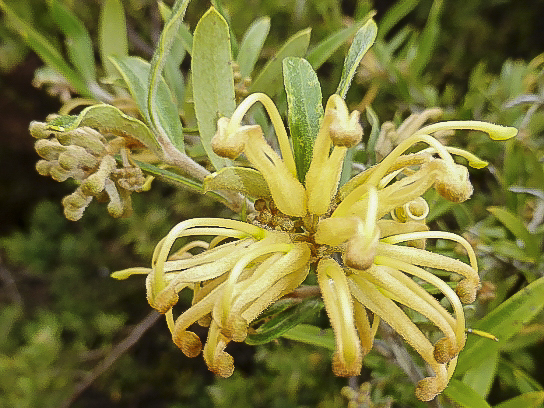
Grevillea ‘Austraflora Canterbury Gold’ is a hybrid developed by Austraflora Nursery, Victoria. The hybrid arose in a garden in Canterbury Road, Blackburn, Victoria in 1971 (hence the hybrid name) and was registered in the late 1970s. Grevillea ‘Austraflora Canterbury Gold’ is a low growing shrub.
Grevillea acropogon
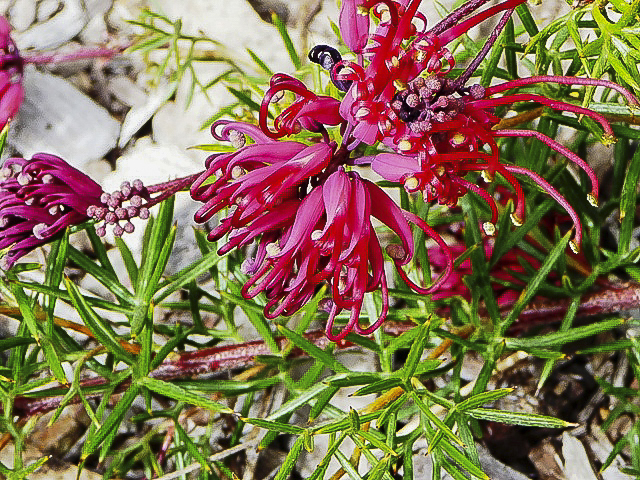
Grevillea acropogon is a prostrate to erect shrub reaching a height of 1.8 metres. The leaves are light green, lobed with a sharp point on the end of each lobe. Flowers are held in terminal racemes and are an eye-catching red. Blooms are rich in nectar and are frequently visited by honeyeaters. Flowering extends through spring.
Eremophila densifolia
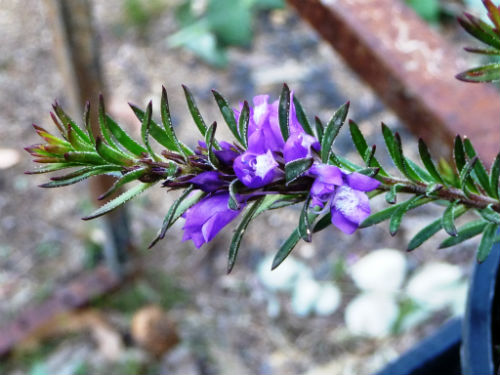
Eremophila densifolia is a mounded ground cover reaching a height of 60 centimetres with a spread of 1.5 metres. The narrow leaves are closely spaced (hence the species name) and have serrated margins. Leaf colour is variable and may be bright green or grey with a purplish tinge. Flowers are tubular, 12 millimetres long, purple, violet or blue. They form clusters close to the ends of the branches.
Chorizema cordatum

Chorizema cordatum, the Heart-leaf Flame Pea, is a native of south-western Western Australia and develops into spreading shrub reaching a height of one metre. It is relatively hardy when grown in humid areas on the east coast of Australia. Leaves are heart-shaped up to six centimetres long with a leathery texture. Sprays of orange-red, pea-shaped flowers cover plants in spring.
Callistemon flavovirens
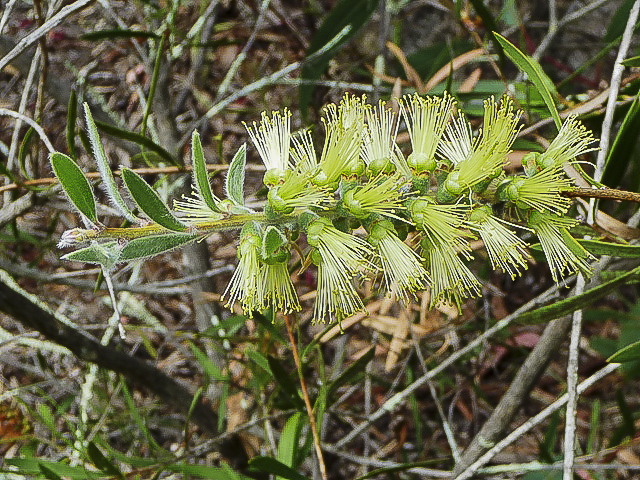
Callistemon flavovirens is a spreading shrub that can reach a height of 2 metres with a similar spread. New growth is soft and has a silvery appearance. Adult leaves are dark green, narrow elliptical, up to 8 cm long and widely spaced along the branches. The greenish-yellow flower spikes are about 8 centimetres long.
Melaleuca armillaris
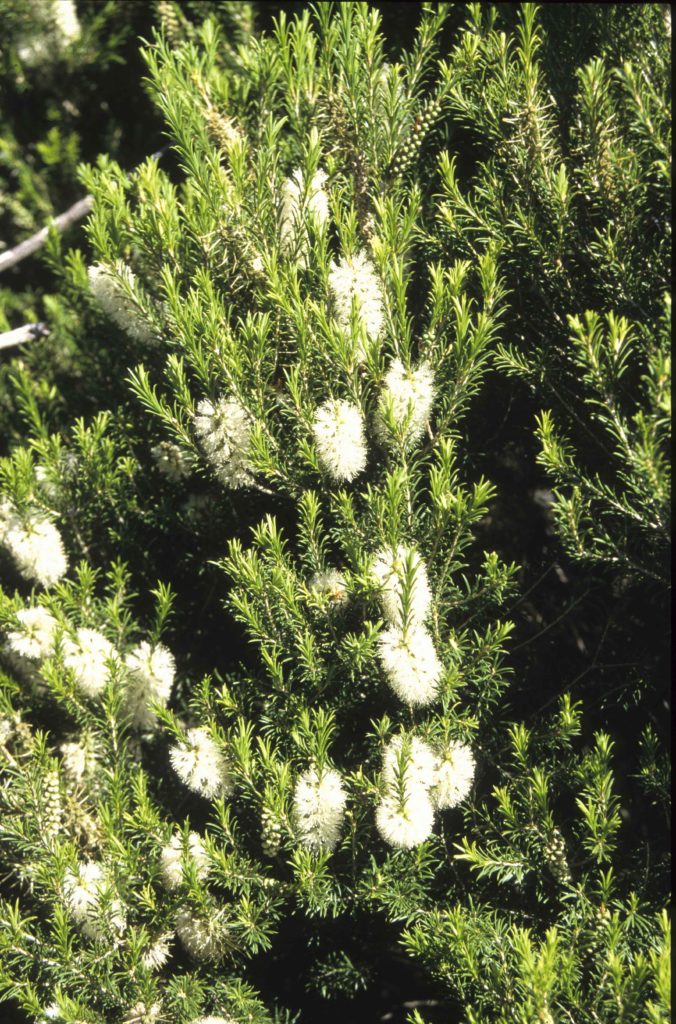
Melaleuca armillaris, Bracelet Honey-myrtle, grows into a tall spreading shrub or small tree. The leaves are light green and narrow. In spring and summer plants become covered with white bottlebrush-like flowers which attract a range of insects.
Melaleuca blaeriifolia
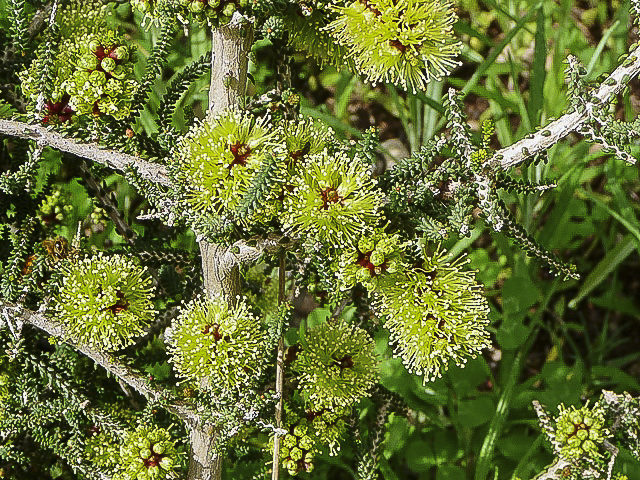
Melaleuca blaeriifolia is a small, spreading shrub that reaches a height of one metre with a similar spread. The small leaves are oval, may be spirally arranged around the branches and are bright green. Small flower heads are yellowish-green to green. They may be carried on the ends of branches or on old wood. Flowering extends through spring and summer.
Melaleuca brevifolia
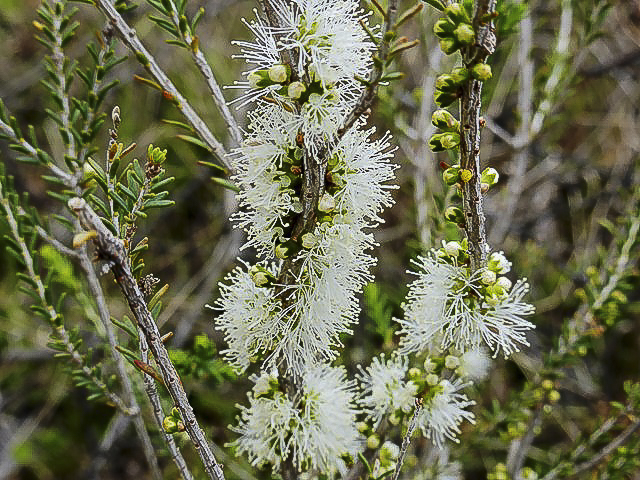
Melaleuca brevifolia is known as the Mallee Honey-myrtle and is a medium to tall shrub. Leaves are small, narrow, about one centimetres long, tightly clustered and spirally arranged around the stems. It has very showy white or cream flowers.
Melaleuca cardiophylla
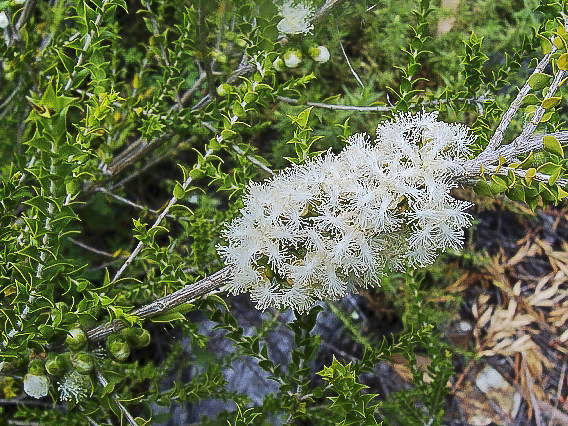
Melaleuca cardiophylla is known as the Umbrella Bush and is a small to medium shrub with intertwined branches. Tiny stem-clasping leaves are heart shaped (hence the species name). White flowers are carried in small clusters along the branches.
Melaleuca decussata
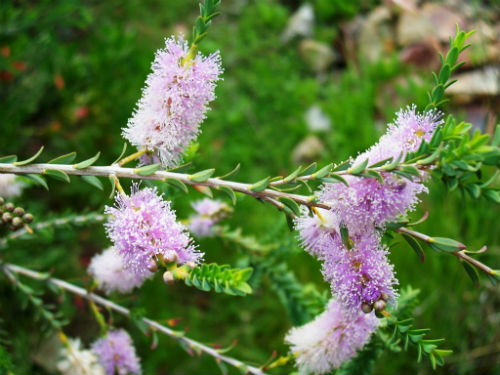
Melaleuca decussata, Cross-leaved Honey-myrtle, is a tall, rounded shrub reaching a height of three metres. Small leaves are arranged in two pairs of opposite rows forming a cross when viewed from above (hence the common name). Mauve flowers are held in small, cylindrical spikes on short lateral branches.
Melaleuca diosmatifolia

A shrub to 3 metres high (sometimes larger) by up to 2 metres wide, with hard and rough bark (not paperbark despite the common names).
Melaleuca diosmifolia
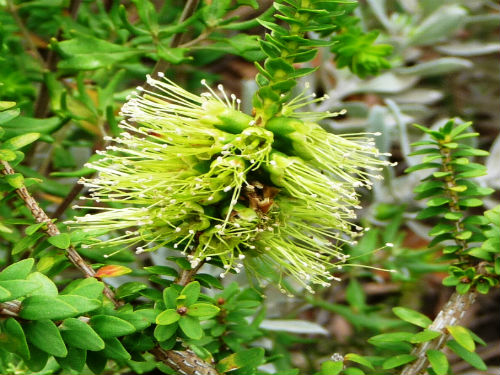
Melaleuca diosmifolia is a dense shrub reaching a height of three metres. Leaves are spirally arranged, elliptical and crowded around the stems. Juvenile leaves are light green while adult leaves become darker. Flowers are arranged in cylindrical, bottlebrush-like, lime-green spikes. The spikes are an unusual colour. Flowering occurs in spring and early summer.
Melaleuca elliptica

Melaleuca elliptica is a native of the southwest of Western Australia and is one of a large number of melaleucas from the west with great horticultural potential. It can reach a height of five metres. The red blooms are profuse, conspicuous and bird-attracting.
